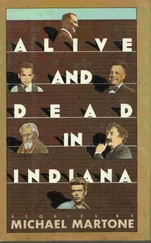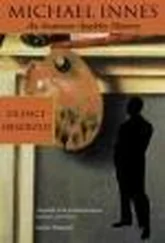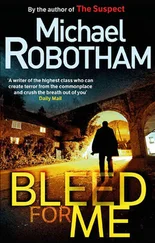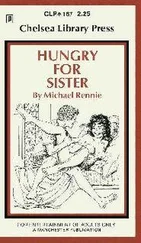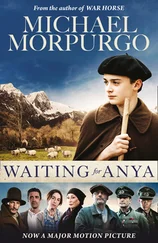This year the wolves have moved back into the park. And number 23 had mauled a camper, his third this year, but didn't kill her. Children walk through the station with bells on their feet. When the wind is right you can hear the songs drifting in from the higher trails. We were told more people would be here this season because of the way the world has turned. There are too many people here for this place ever to be wild wild.
The cable's come as far as Cutbank. I rent a room in town my days off and watch the old movies they've juiced up with color. But the colors are as pale as an old rug, like they've already faded from old age. Now the blue sky outside looks manufactured, transported here from the other side of the mountain, its own conveyer belt. A bolt of dyed cloth. It drips with color. And my shorts here are khaki, which is Urdu for the word dirt . Sometimes my eyes hurt from seeing the situation so clearly. Every ten minutes or so I hear the ice tumble in the machine out on the breezeway. Then the condenser kicks on. Beyond the hot tableland I can see the five white fingers of the glacier.
All of what I know about the world worms its way to me from Atlanta. The message is to stay put. They have a park in Atlanta. In it is the Cyclorama, a huge picture with no edges. The battle of Atlanta is everywhere. The painting keeps wrapping around me so that even out of the corner of my eyes I see nothing but the smoke and the smoky bodies falling about me. Atlanta is a mustard yellow in the distance. Sherman rides up in front of me. The battle ends and it begins again. I climb out of the painting through a hole in the floor. There is no place to overlook it. In the basement of the building is the famous steam locomotive The General. I see Ted Turner has just painted that movie.
And it strikes me now that I looked like Buster Keaton, my campaign hat tilted like his hat, as I stood next to King on the memorial steps. The monument behind us was white, even its shadows. King's suit had a sheen like feathers or skin. The white shirts glowed. Everyone wore white shirts except for my khaki, because color hadn't been invented yet. The Muslims wore white. Their caps were white. And the crowd spilling down the steps looked like marble in white to stay cool. It was swampy near the river. They showed the speech around his birthday. I am always there, a ghost over his left shoulder. I was so young. I look as if nothing could surprise me. A ranger look. It always surprises me now. Now I know how it all came out, what happened to that man. I look like a statue. King flickers. I kept him in the corner of my eye. I watched the crowd. What I see is me seeing. I don't see what is coming. When they color it they will get the color of my eyes wrong.
In the window of the motel, I watch the day move. I have made a career with Interior. The range is being painted over by a deep blue sky. The glacier grips the mountaintop and then lets go to form a cloud. Then everything just goes.
THE TEAK WOOD DECK OF THE USS Indiana
I stabbed a man in Zulu. It had to do with a woman. I remember it was a pearled penknife I'd got from a garage. I'd used it for whittling, and the letters were wearing off. It broke off in his thigh and nicked the bone. It must have hurt like hell.
I did the time in Michigan City in the metal shop where I would brush on flux and other men would solder. Smoke would be going up all over the room. They made the denim clothes right there in the prison. The pants were as sharp as the sheet metal we were folding into dustpans and flour scoops. It was like I was a paper doll and they'd put the jacket on me by creasing the tabs over my shoulders. And the stuff never seemed to soften up but came back from the laundry shrunk and rumpled and just as stiff, until the one time when all the starch would be gone and your clothes were rags and you got some new.
There was a man in there building a ship. When I first saw it, he had just laid down the keel and the hull looked like a shiny new coffin. This guy was in for life, and he kept busy building a model of a battleship, the USS Indiana . He had hammered rejected license plates, flattened the numbers out. He'd fold and hammer. In the corner of the shop he'd pinned up the plans, a blue ship floating on the white paper. He had models made from balsa, the ribs showing through in parts. He had these molds of parts we would use for casting, these jigs and dies. His tools were blades and snips. The antennae in the model were the needles he used to sew the tiny flags. The ship was 1/48th the size of the real thing, as big as a canoe. The men who walked the deck had heads the size of peas. He painted each face differently, applied the ratings on their blue sleeves. He told me stories about each man frozen there on the bridge, here tucking into a turret, here popping out of a hatchway. He showed me letters from the same men. He had sent samples of the paint he had mixed to the men who had actually scraped and painted the real ship, asking if this was anywhere near. He knew the hour, the minute, of the day his ship was sailing, the moment he was modeling.
But this was years later. At first I saw the hull. I saw the pile of rivets he collected from the temples of old eyeglasses. He collected spools for depth charges, straws for gun barrels, window screen for the radar. He collected scraps from the floor of the shop and stockpiled them near the ship. Toothpicks, thimbles, bars of soap, gum wrappers. Lifesavers that were Lifesavers, the candy, caps from tubes for valves and knobs, pins for shell casings. Everything was something else.
Soon after he started building the ship he knew soon enough he'd finish too soon. So he went back and made each part more detailed, the guns and funnels, then stopped again and made even the parts of parts. The pistons in the engines, lightbulbs in the sockets.
Some men do this kind of thing. I whittled, but I took a stick down to nothing. I watched the black knots of the branches under the bark grow smaller with each smooth strip until they finally disappeared. Maybe I'd sharpen the stick, but that got old. Finally I got down to shavings thin like the evening paper at my feet. That was what I was after. Strip things so fine that suddenly nothing is there but the edge of the knife and the first layer of skin over my knuckle.
One of the anchors of the real battleship is on the lawn of the Memorial Coliseum in Fort Wayne. The anchor is gray and as big as a house. I took my then wife to see it. We looked around that state for the other one but only found deck guns on lawns of the VFW, a whole battery at the football stadium near the university. In other towns, scrap had been melted and turned into statues of sailors looking up and tiny ships plowing through lead waves.
The deck of the model was the only real thing. He said the wood was salvaged from the deck of the real ship. A guard brought him a plank of it. He let me plane it, strip the varnish and splinter it into boards. A smell still rose from it of pitch, maybe the sea. And I didn't want to stop. I've seen other pieces of the deck since then, in junior high schools where it's been made into plaques for good citizens. The wood is beautiful. The metal plates engraved with names and dates are bolted on, and near the bottom is another smaller plate that says this wood is from the deck of the battleship. It is like a piece of the True Cross. And that is why I came to the capitol in Indianapolis to see the governor's desk. I heard it was made from the teakwood deck of the USS Indiana .
So imagine my surprise when in the rotunda of the building I find the finished model of the ship in a glass case with a little legend about the prisoner in Michigan City. He'd finished it before he died. The porthole windows were cellophane cut from cigarette packs. The signal flags spelled out his name. It was painted that spooky gray, the color between the sea and sky, and from the stern a blue airplane was actually taking off and had already climbed above the gleaming deck where a few seamen waved.
Читать дальше



